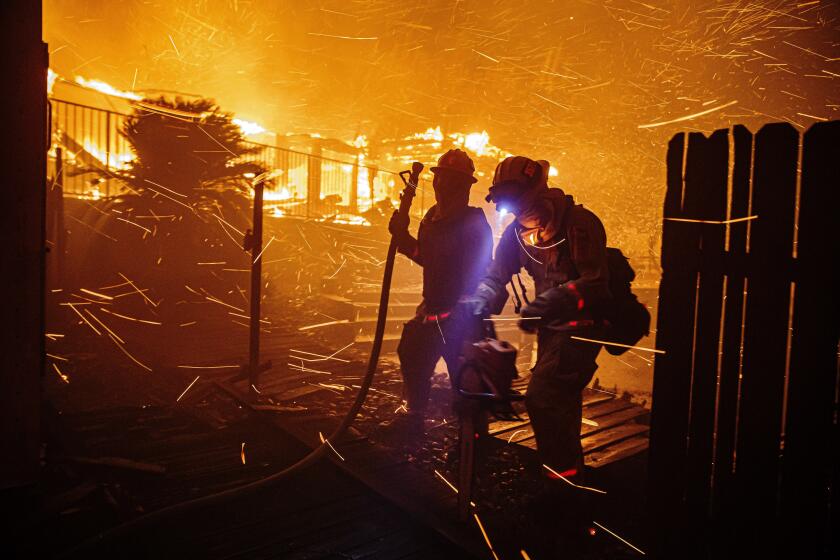Los Angeles wants to build a hydrogen-fueled power plant. It’s never been done before
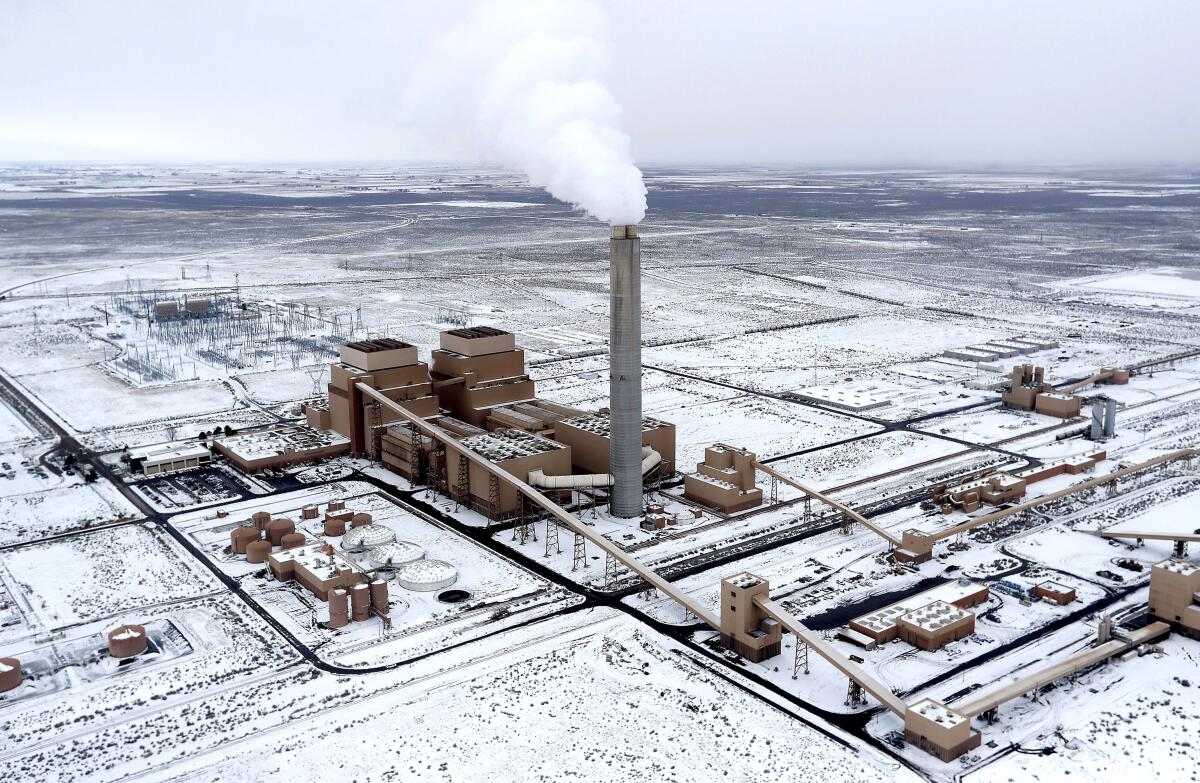
As Los Angeles weans itself off the last of its coal-generated electricity, the city needs to replace that fuel with a climate-polluting natural gas plant in Utah, Los Angeles Department of Water and Power staff insisted Tuesday.
But they also pledged the facility would eventually burn renewable hydrogen instead of natural gas — something that has never been done before.
Following pressure from climate change activists, DWP laid out its most detailed timeline yet for transitioning from planet-warming gas to clean-burning hydrogen at a new facility that would replace the coal-fired Intermountain Power Plant. If the utility succeeds, the Intermountain plant could become a model for governments and power companies around the world.
“There is no way to get to 100% renewable energy that I can see right now without hydrogen in the mix. It doesn’t exist,” DWP General Manager Marty Adams told the utility’s board of commissioners on Tuesday.
Utility staff told the board it’s critical to build an 840-megawatt gas-fired power plant to replace the coal-burning facility that DWP operates today. Without a traditional power plant, they said, the city might have trouble keeping the lights on when there’s insufficient electricity being generated by solar panels and wind turbines.
But for the first time, DWP leadership committed to installing turbines capable of burning a mix of 30% hydrogen and 70% gas when the new power plant opens in 2025. Under the timeline described Tuesday, that ratio would steadily change until the plant burns 100% hydrogen in 2045, the deadline set by state lawmakers for a 100% climate-friendly electricity supply.
“We will do everything we can to accelerate this,” Adams said.
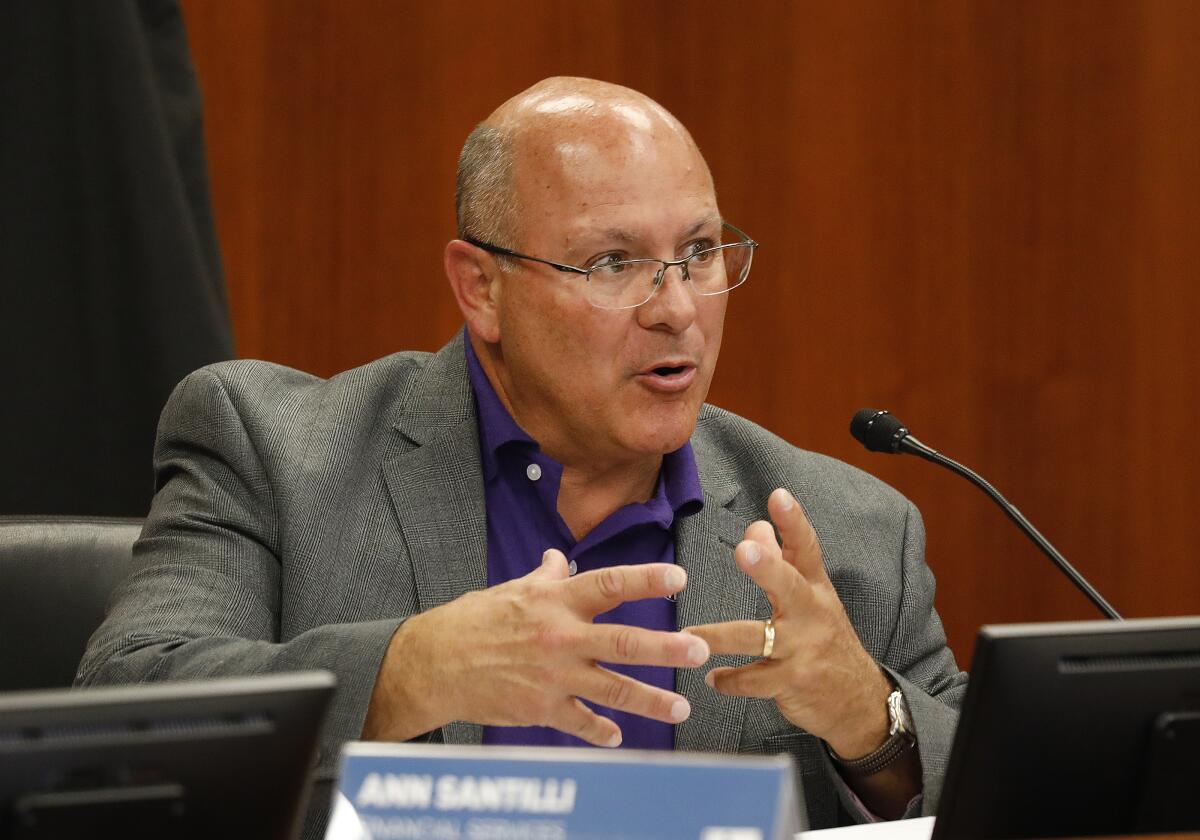
In a written statement, Mayor Eric Garcetti said committing to renewable hydrogen at Intermountain “represents a unique chance to make a meaningful reduction in greenhouse gas emissions, while ensuring a quick and seamless transition to 100% renewables.”
“The climate crisis demands that local government move as quickly as technological innovation can take us in the movement toward clean energy, and I’ve directed LADWP to accelerate our progress toward a carbon-free grid at every possible opportunity and location,” Garcetti said.
Figuring out how to operate the power grid without natural gas, one of the main causes of climate change, is a key challenge facing California as the state works to slash its planet-warming emissions. It’s an especially urgent question for Los Angeles, following Garcetti’s decision earlier this year to eventually shutter three of the city’s four local gas plants.
Climate activists have slammed DWP’s plans for a new gas plant in Utah, saying the city ought to act more aggressively as rising global temperatures contribute to deadly wildfires, rising seas and worsening droughts in California and elsewhere.
Pummeled by the impacts of severe weather, California Democrats list climate change as the top issue they want their presidential nominee to tackle, outstripping healthcare reform, a poll finds.
For some of those critics, the timeline laid out Tuesday isn’t fast enough.
Jasmin Vargas, an organizer with Food and Water Watch, said L.A. should target 100% renewable hydrogen by 2025, not 2045. Food and Water Watch is closely allied with the Sunrise Movement, the youth-led coalition pushing for stronger climate action.
“We’re in a climate and ecological crisis right now,” Vargas told the DWP board. “We’re in emergency mode.”
Luis Amezcua, a senior campaign representative with the Sierra Club, reacted more positively to the utility’s timeline. He said it would be important to hold DWP accountable and make sure it follows through on the plans outlined Tuesday.
“We’re excited about it. I think it’s great to see the department really thinking about having a leadership role around getting to 100% clean energy,” Amezcua said. “This green hydrogen power plant would be the first of its kind.”
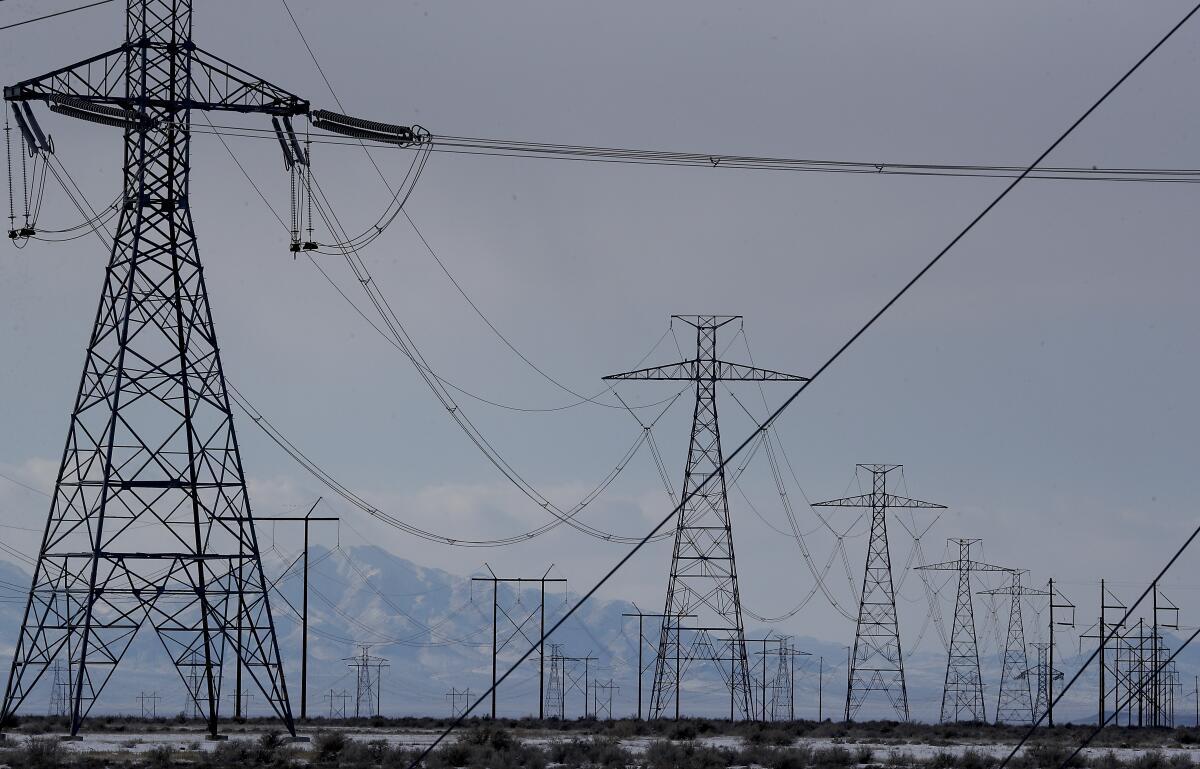
Globally, the market for renewable hydrogen — which is generated by using renewable energy to split water molecules into hydrogen and oxygen, in a process called electrolysis — is small but poised to grow rapidly, experts say.
Just 253 megawatts of renewable hydrogen projects have been deployed over the last two decades, according to a recent report from the research firm Wood Mackenzie. But by 2025, another 3,205 megawatts of electrolyzers to produce “green hydrogen” will be deployed, the research firm projected, driven by demand for cleaner transportation and industrial fuels.
Another research firm, Bloomberg New Energy Finance, recently projected the costs of renewable hydrogen production will fall from $2.50-$6.80 per kilogram in 2019 to $1.40-$2.90 by 2030. By mid-century, costs could fall to $0.80 per kilogram.
“For a hydrogen economy to develop, massive amounts of the gas will need to be produced at low cost and with minimal emissions,” Bloomberg wrote. “The rapidly declining costs of renewable energy and electrolyzers now make this possible.”
L.A. will build a gas-fired power plant in Utah, even as Mayor Eric Garcetti touts a “Green New Deal” to fight climate change.
Still, those are projections, not reality. And no one has ever built a power plant fueled by hydrogen.
DWP has been in discussions with three possible vendors — General Electric, Mitsubishi and Siemens — for the gas turbines it plans to install at Intermountain in Utah. Based on conversations with those vendors, utility staff said Tuesday they expect to be able to buy turbines capable of burning up to 30% hydrogen by the time the new power plant opens in 2025.
Those turbines would need to be upgraded or replaced over time as technology matures to allow higher levels of hydrogen burn — which is far from guaranteed. And Los Angeles may need to secure buy-in from Utah’s Intermountain Power Agency, which actually owns the power plant and the 488-mile transmission line that carries its electricity to Southern California.
DWP would also need to dedicate large amounts of clean energy to the electrolysis process, which won’t be cheap. Utility staff didn’t commit to having a 30% hydrogen fuel mix by 2025 — only to have turbines capable of burning 30% hydrogen.
Fred Pickel, the utility’s in-house ratepayer advocate, sounded a note of caution about L.A. pledging to do something nobody else has done. He alluded to the adage that in the hyper-cautious utility industry, nobody wants to be first.
“Utilities race to be second,” Pickel said. “And sometimes it’s better to be third.”
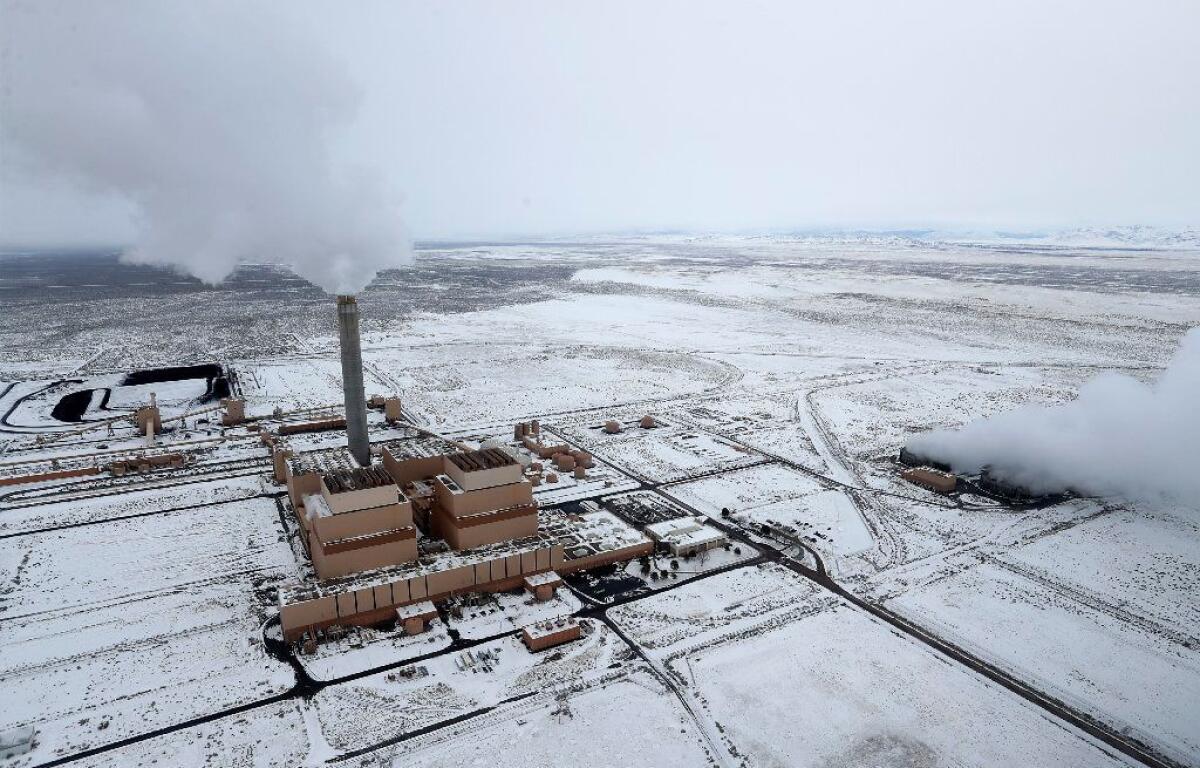
If renewable hydrogen becomes commercially viable on a wide scale, one of its most significant climate benefits could be to displace fossil fuels in industrial processes such as steel-making and cement manufacturing. Hydrogen can also be used to power fuel cell vehicles, or potentially to displace natural gas as a heating fuel, a possibility touted by Southern California Gas.
Using renewable hydrogen to fuel natural gas turbines and generate electricity — as DWP has proposed — is “more of a theoretical” at this point, said Ben Gallagher, an expert in carbon and emerging technology at Wood Mackenzie.
“There’s not serious pilot projects that are underway that I’m aware of,” Gallagher said.
Despite the challenges of being first, DWP officials expressed optimism on Tuesday. They touted green hydrogen as a key component of plans for a “renewable energy hub” in Utah, with solar farms, wind turbines and potentially geothermal power plants sending climate-friendly electricity to California through long-distance wires that currently transmit coal power.
There’s also a massive underground salt dome directly across the street from the coal plant, where the Los Angeles utility hopes to bank electricity generated by solar and wind power through a technology called compressed air energy storage.
The salt dome could be used to storage renewable hydrogen, too.
“I understand the concern about this being the first of its kind,” Paul Schultz, DWP’s director of external energy resources, said at Tuesday’s board meeting. “But it’s a unique opportunity here.”
